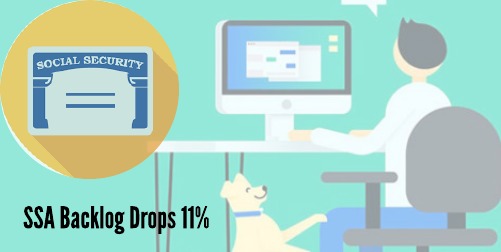Teleworking has increased productivity in some agencies- like the Social Security Administration, where 53,000 feds working from home led to an 11% decrease in their backlog
Before the world was upended by a microscopic virus, back in October, the Social Security Administration (SSA) had ordered 12,000 of their employees to cease teleworking. Abruptly, the federal workers, who all filled administrative job roles for the SSA, were given just two weeks to reorganize their lives in returning to a 5-day workweek at their government offices. Some had designed their lives around 1 to 3 days of telecommuting every week, in some cases for as long as six years. The AFGE (American Federation for Government Employees) protested the move at the time, and the federal government gave concise reasons for their decision to stop a six-year teleworking program at the SSA, citing increased backlogs as their main defense.
With November 9th being the first day these workers weren’t allowed to telework anymore, there wasn’t much data to say whether it made an impact on the backlog or not before the coronavirus hit. Looking at the monthly numbers for processing incoming retirement income applications and disability applications over the past 2 years, not much can be extrapolated. In November 2018, there were 16,143 fewer applications processed than in 2019 but considering 451,373 of these applications were still handled- the difference becomes more trivial. Although January 2020 was arguably more productive than the previous year, it appears this could just be an outlier. Since March 11th, however, since COVID-19 sent over 50,000 SSA employees to telecommute, the overall backlog at the agency dropped 11%.
What the 11% decrease in the agency’s backlog really signifies is that the 53,000 federal employees working from home for the SSA are getting their jobs done, and at an efficient pace. It is hard for experts to accurately determine how many of the 2.1 million federal employees throughout the country are working from home, but roughly 882,000 are eligible to do so. Despite this, many federal workers are said to have been coming into the office even if they are able to work from home. Feds are allowed to leave the house even during active stay-at-home orders, they just need to show their ID badge. Feds like Ralph DeJuliis of AFGE, and a Social Security employee in Oklahoma, are strong supporters of telework. He says it is “good for the employees, good for the public… We’re getting checks to people faster and quicker.”
Until Next Time,

**Written by Benjamin Derge, Financial Planner. The information has been obtained from sources considered reliable but we do not guarantee that the foregoing material is accurate or complete. Any opinions are those of Benjamin Derge and not necessarily those of RJFS or Raymond James. Links are being provided for information purposes only. Expressions of opinion are as of this date and are subject to change without notice. Raymond James is not affiliated with and does not endorse, authorize, or sponsor any of the listed websites or their respective sponsors.

Social Security Administration Backlog
